Hi everyone!
Laura and I just parted ways and as per usual I’m behind on my actual blog updates. To rewind for a sec: We both finished our jobs volunteering as English teachers with HOOP at the end of September, and traveled around Peru together for the month of October.
I’m on a bit of a time crunch since I have a flight to Buenos Aires on November 1 (tomorrow?!), but it became apparent apparent that you could spend years in this country without seeing, doing, or experiencing everything it has to offer. So we had to pick and choose, equal parts aided by the Internet and handicapped by our apparent inability to do anything after an overnight bus ride but lie in bed until hunger drove us to the nearest Happy Cow restaurant recommendation.
Leaving Arequipa
…sucked, quite honestly. Every time we’re in a bus station, the thought occurs to both of us (usually at the same time, because that’s the wavelength we’re operating on right now) is how easy it would be to buy a bus ticket and go back to Arequipa. To do what…well, that’s the question that keeps us pushing forward on our travels. Both of us are travelers at our cores, which makes the sharp stab of longing to return to the familiar brief, though no less painful.

So, what have we been up to?
First stop after Arequipa was a quick day-and-a-half in Puno to tour Lake Titicaca. On the two-island tour, we stopped on Uros and Tequile. Both of us immensely preferred Tequile, although Uros was fascinating because of its “floating island” status. The island is literally made of layers and layers of reeds woven together that provide a stable structure to build a village on. These structures last for about 35 years or so, and are a living historical artifact of a time when the villagers fled invaders on the mainland by devising the concept of a floating island.
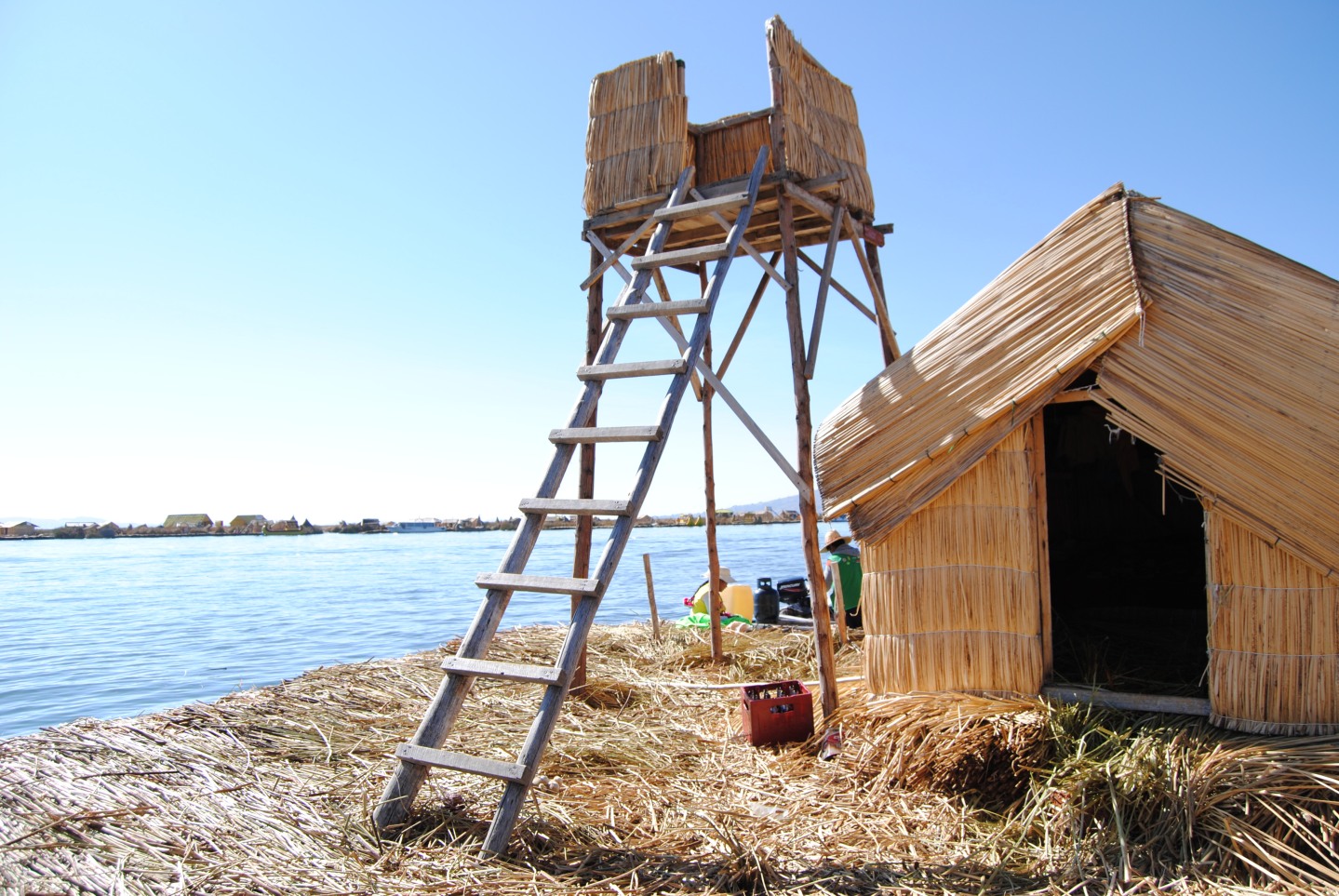
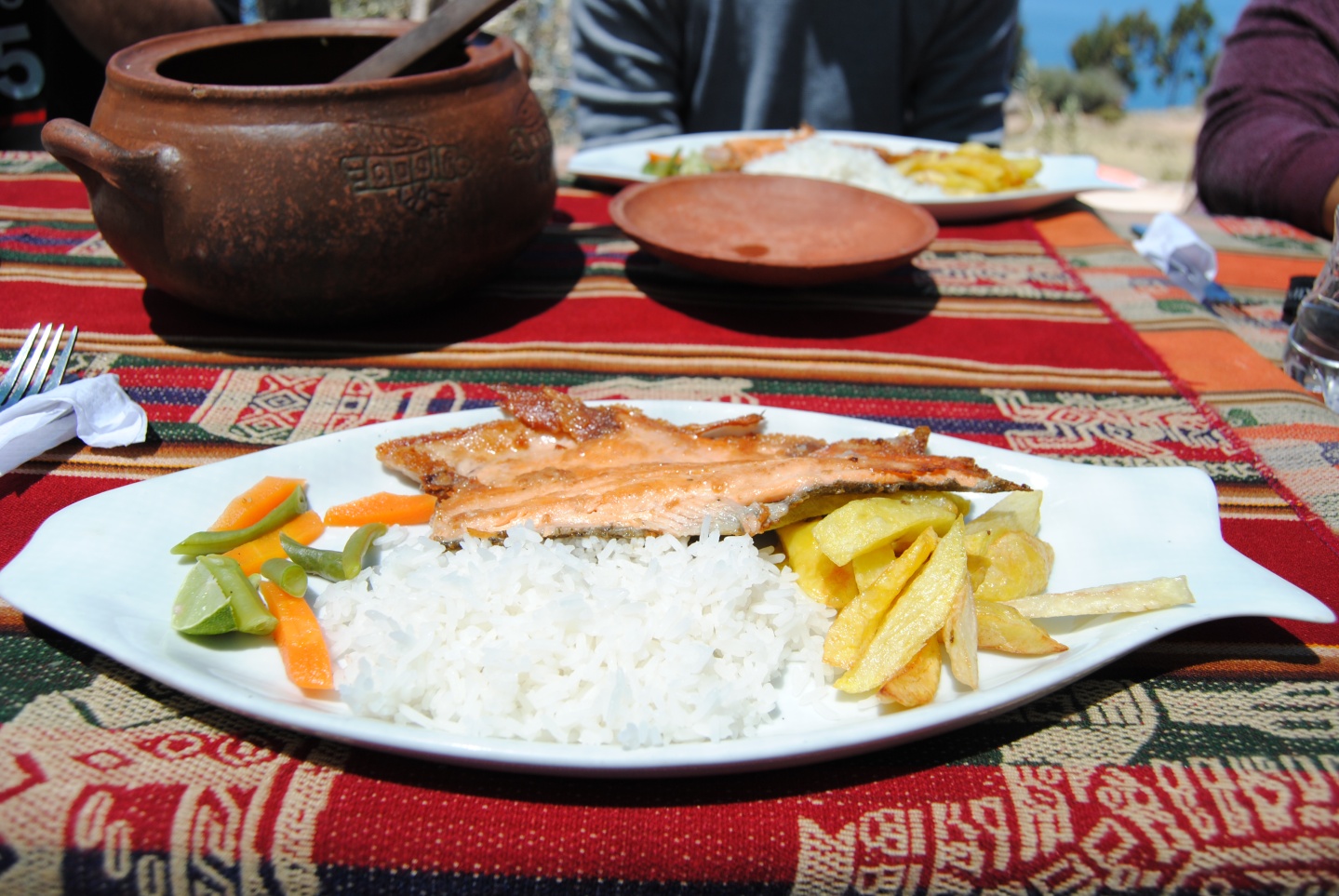
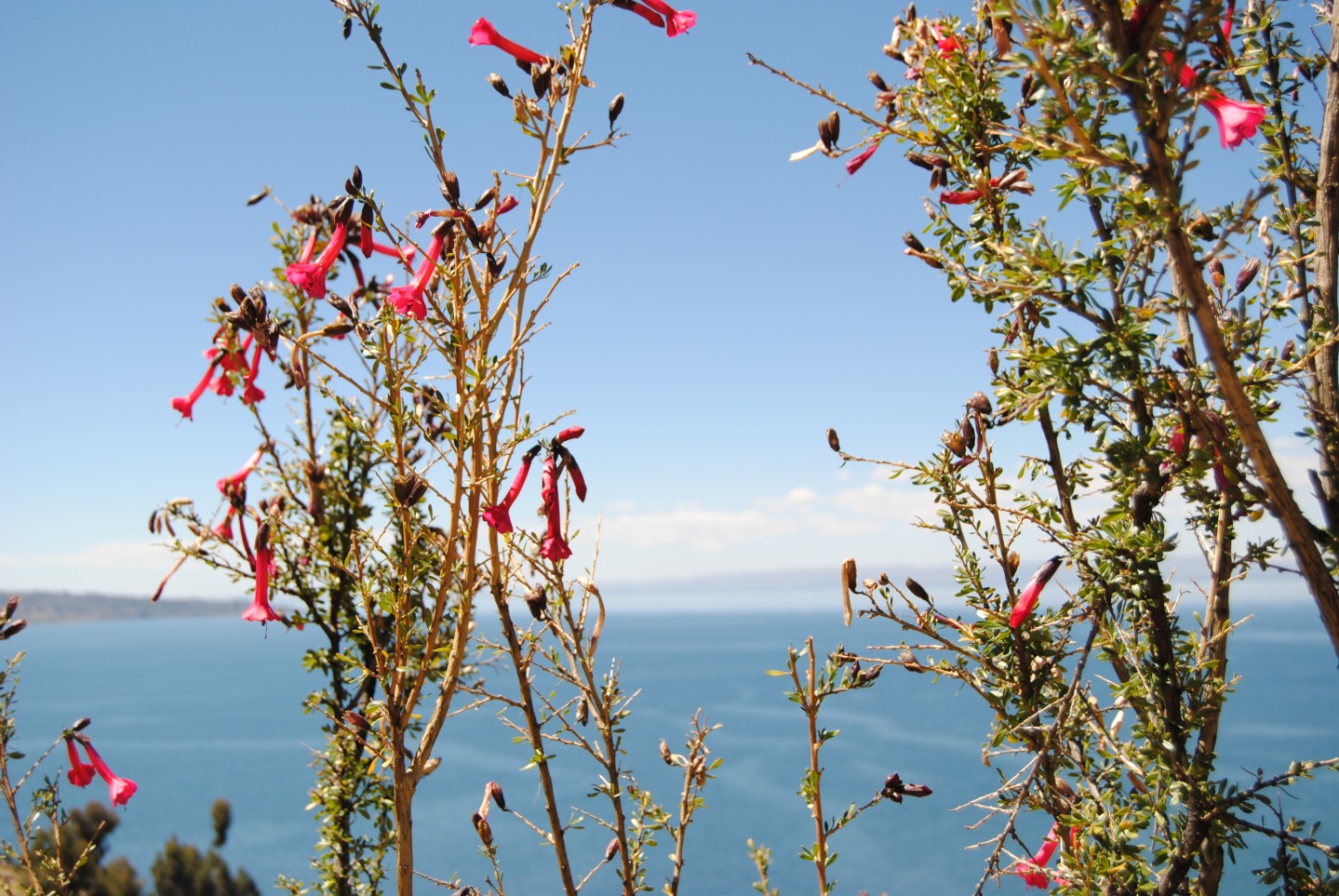
Next stop: Cusco
We chose Cusco for a few days’ worth of stay-cation time partially because it’s the jumping off point for exploring the Sacred Valley.

The city is also something of a secret foodie gem for vegetarians/vegans. Although I still staunchly identify as an omnivore, for the purposes of traveling this month I’ve adopted a temporary vegetarian/vegan approach to food. Why? Because Laura’s been vegan for longer than most people’s marriages in the U.S. last, and a girl’s gotta respect that. Also, the food is damn good.


Sacred Valley: Ollantaytumbo, Urubama, and Pisac
After coming down from days of doing nothing (or relatively nothing, compared to hectic days back in Arequipa), we took a collectivo out to Ollantaytumbo to start our travels. We arrived in dark to the small main square, where one side was taken up by locals playing an enthusiastic game of volleyball. Fortunately, our hostel was also situated on the main square, making it easy to find.
The next day, we set up shop in a local cafe for a few hours before heading out and exploring the local market. We tried to sneak onto the ruins that require a boleto turistico to no avail; what looked to be an unguarded entrance actually had a guard hidden just off to the side when we casually strolled in, and then not-so-casually-backed out.
More flustered than disappointed, we backtracked through the town in search of some way to get onto the ruins that didn’t require a tourist ticket, and happened to stumble across the entrance to just those ruins. We’re still unclear as to why these are the free ones when you can climb higher into the mountains and, it appeared, see more than the ones you pay for, but we certainly weren’t complaining!
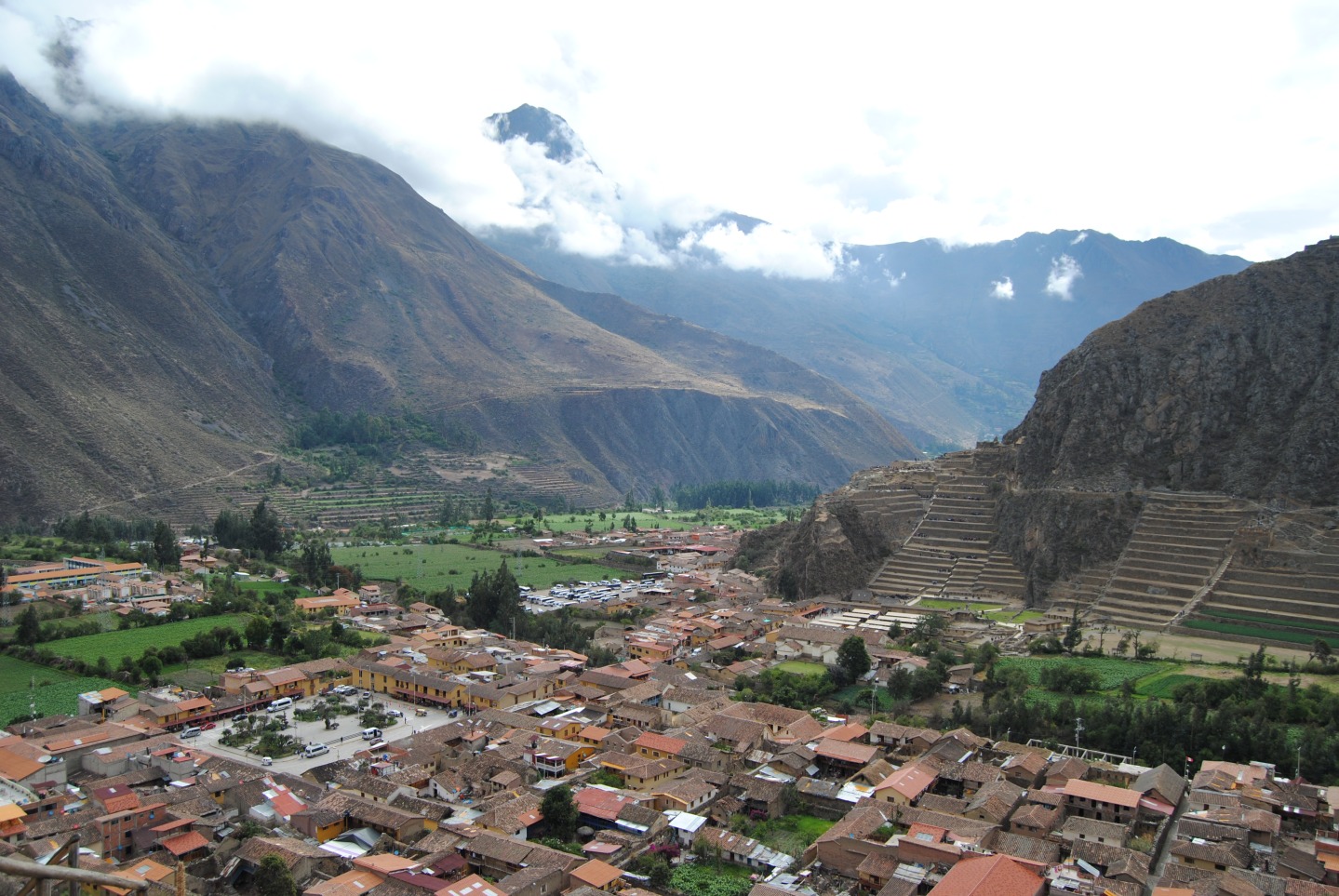
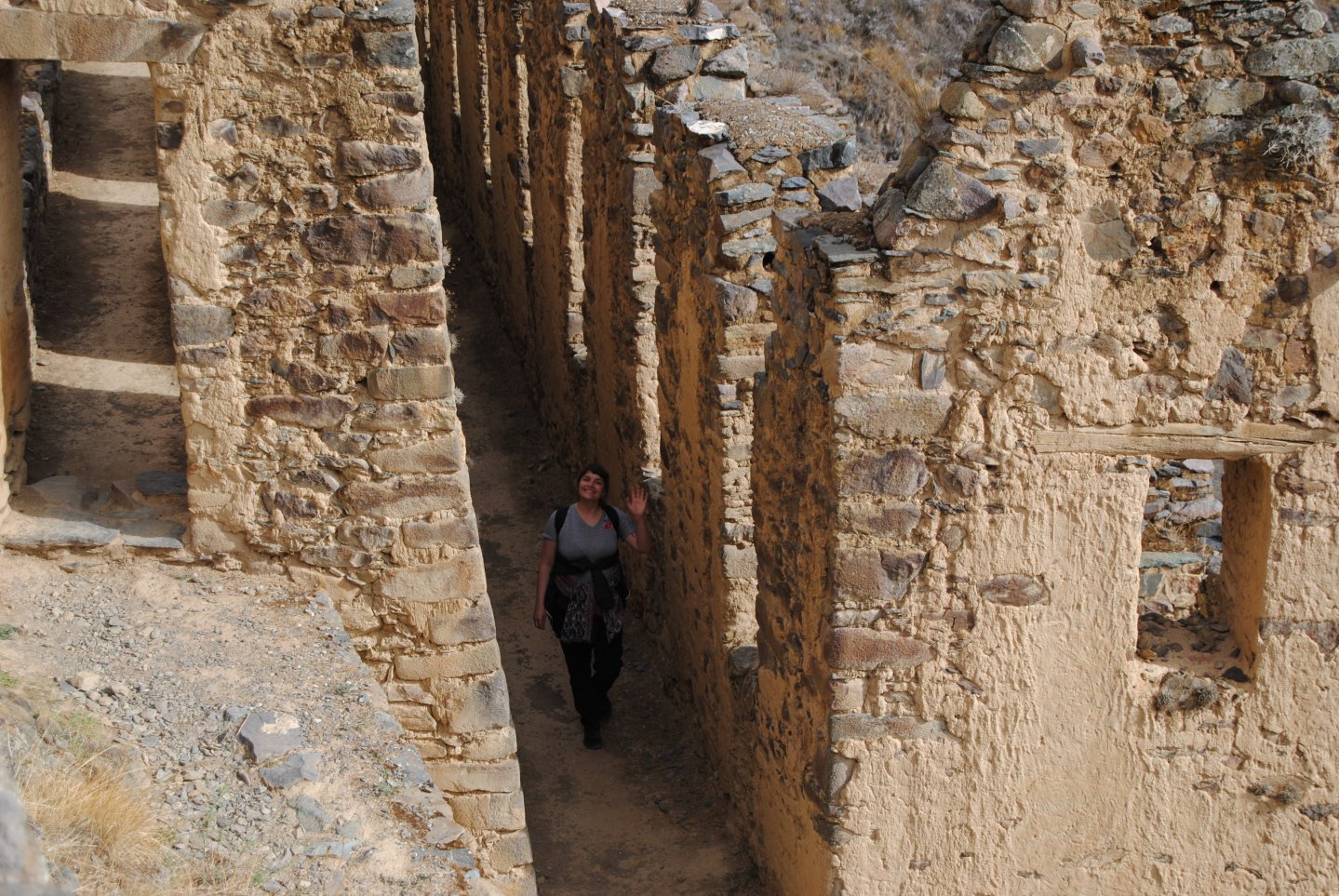
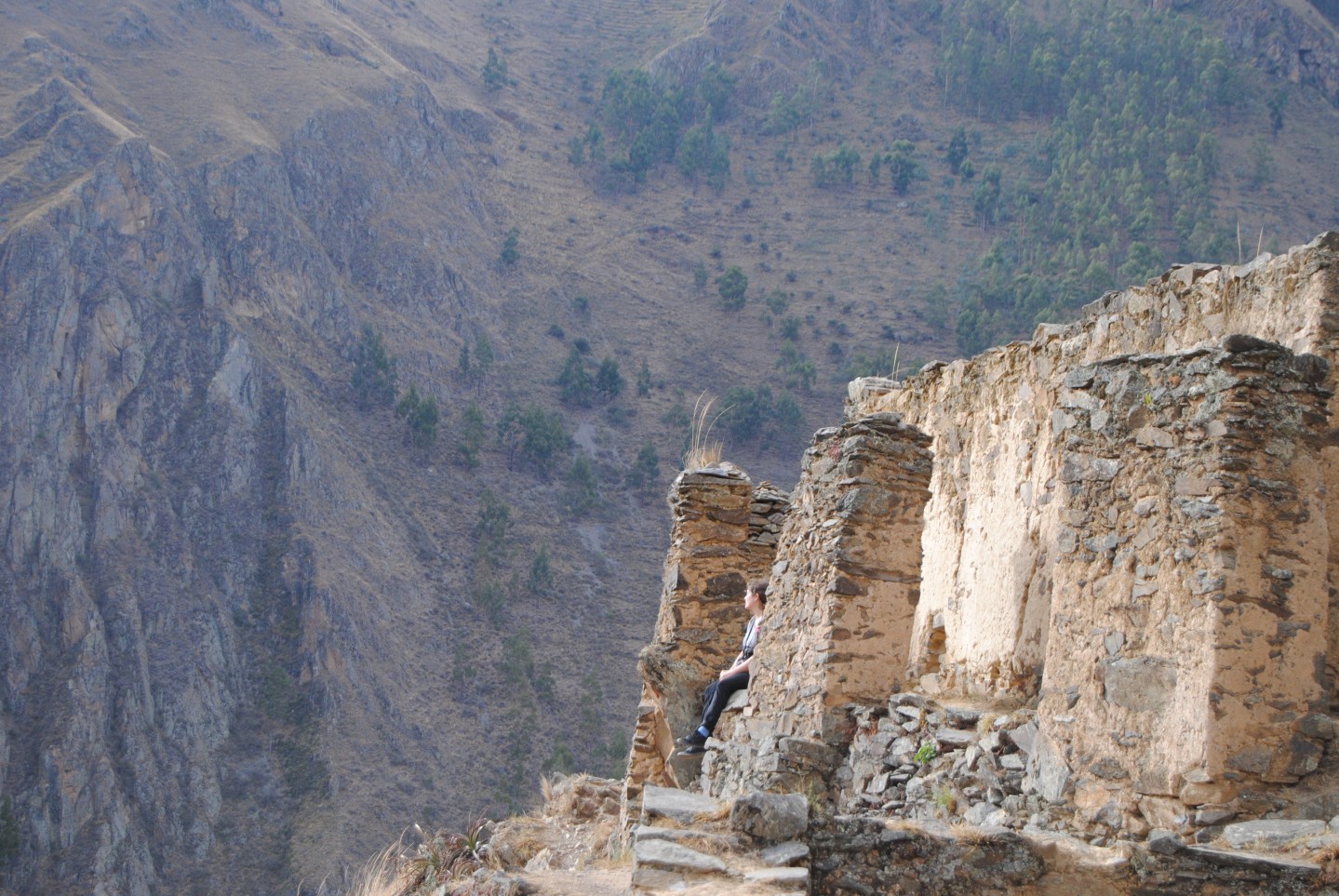
From Ollantaytumbo, we took another collectivo to Urubamba.
The hostel was slightly more difficult to find and a bit of a walk, but we made it without any major mishaps. The next morning, we set off determined to save a bit of money and make a mini-trek out of going to see the famous Minas Salineras, or Salt Mines.
I’d read that it was possible to pay a tuk-tuk or a taxi to the small community where, from there, you could walk up into the mountains and see the salt mines. Keen to save a few soles and also to see if we could pull this off, we hailed a blue tuk-tuk and set off. The main topic of conversation on the way there was whether or not we would die, as we careened down hills slick with rain in the little three-wheeled metal contraption.
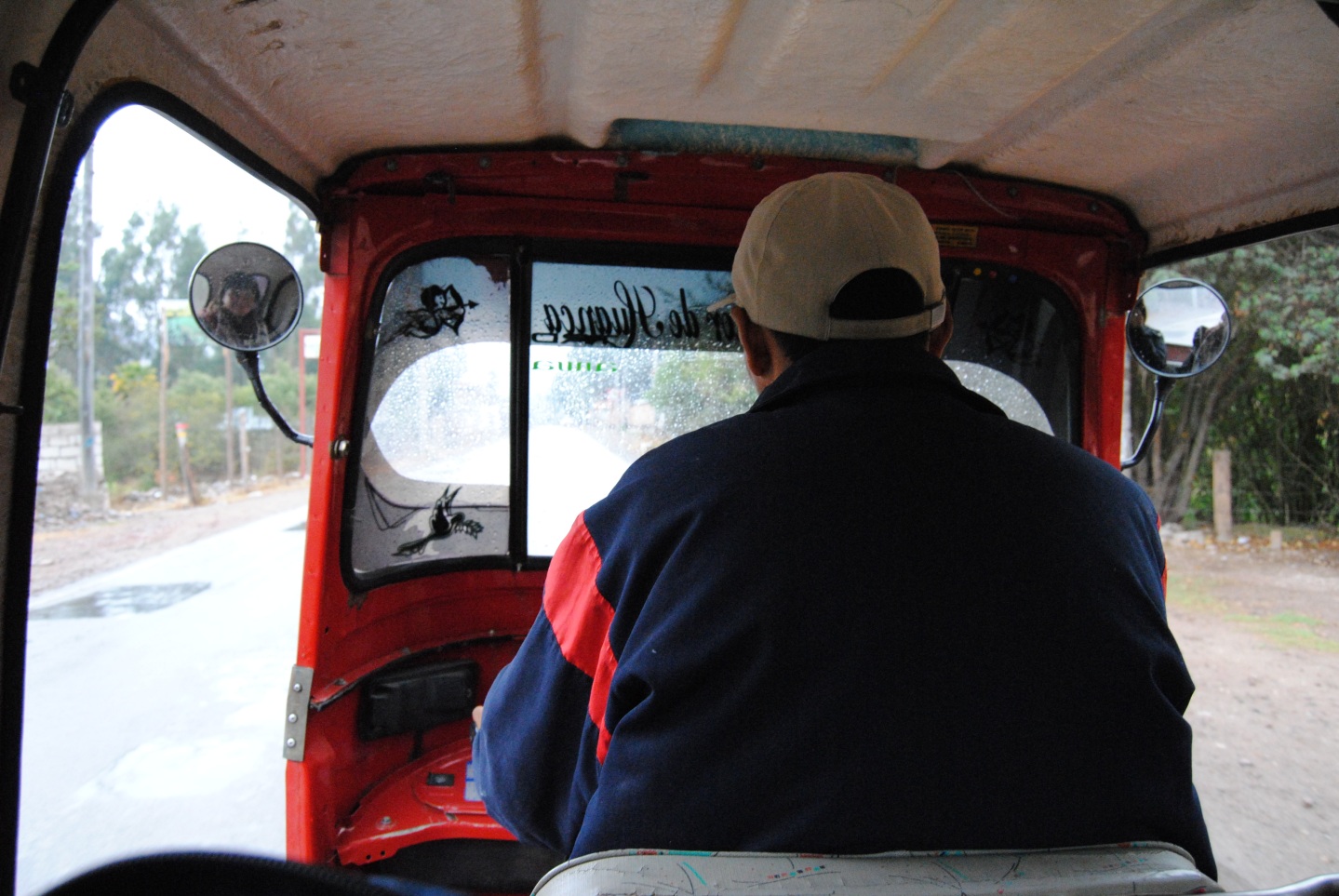
We arrived after about twenty minutes, and paid for the ride and entrance to the town, which came in at 20 soles total (10 for the ride and 10 for the entrance). We were pretty sure we’d gotten stiffed on the ride there, but at still well under what we’d be paying for an official tour at that point, set off in good spirits despite the damp gray day.

After about 45 minutes of walking, through the town and then up into the mountains, the mines came into view. The existence of the mines themselves is something of a mystery, as they date back to pre-Incan times.
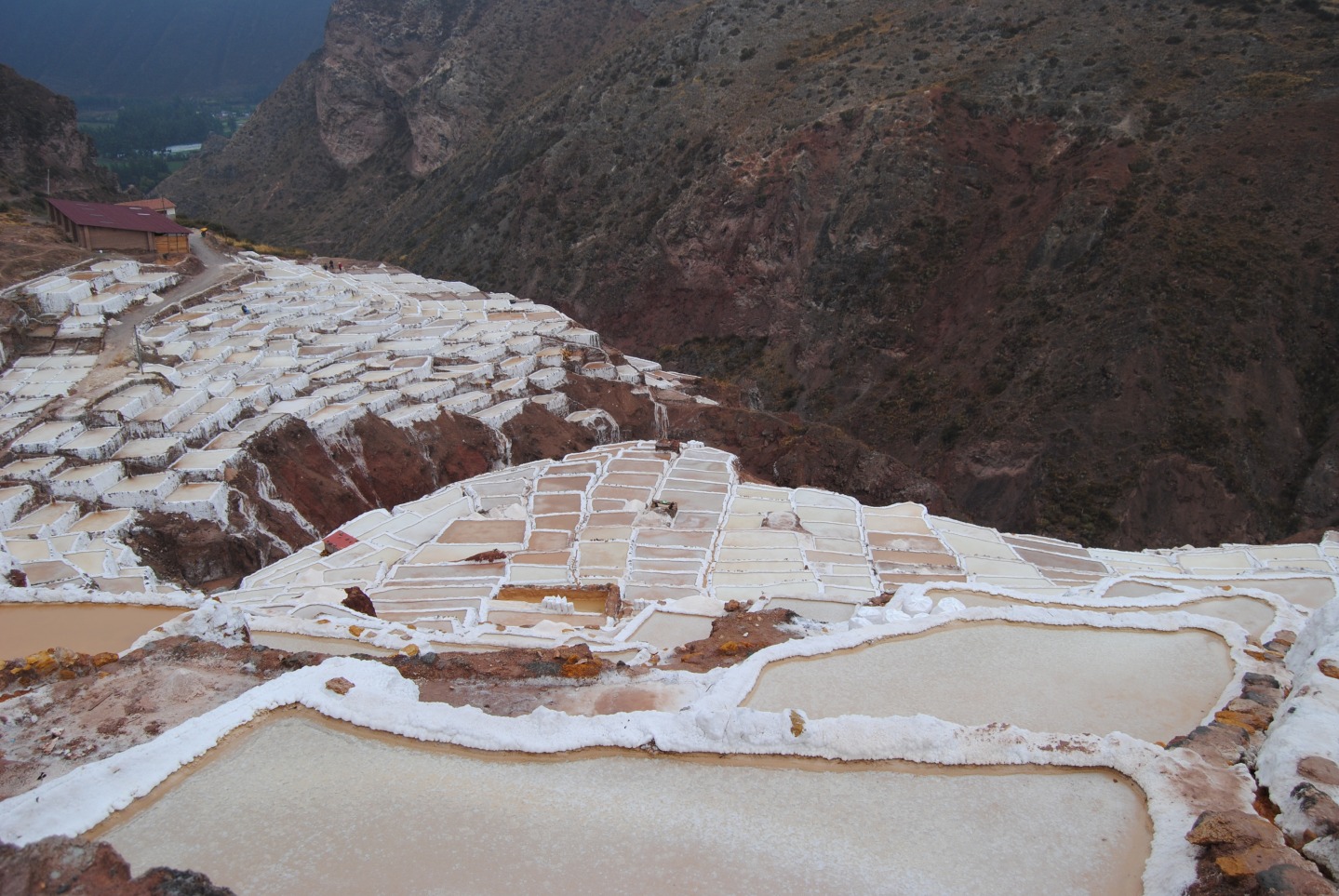
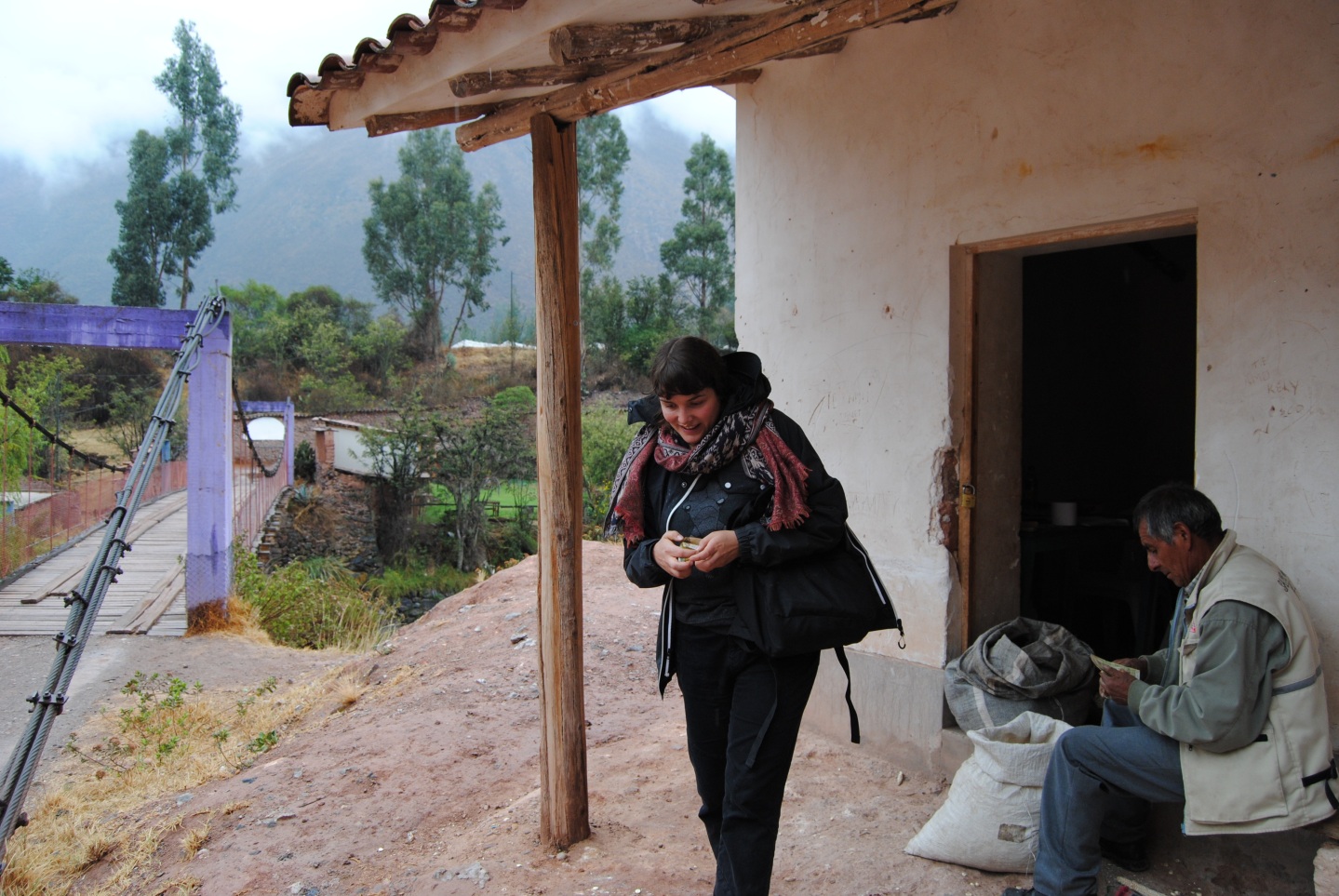
After we hitched a ride back to the main square from a collectivo, we wandered about looking for a place to eat before settling on a daily menu in an unassuming-looking little restaurant. Daily menus in Peru include a soup, entree, and beverage that’s also typically accompanied by a small dessert, all for a set price.
So we go into this restaurant
The first woman we talk to assures us that all of the options listed on the chalkboard outside are indeed available and part of the menu of the day. She disappears into the back and we sit down. A few minutes later, another woman comes out and we attempt to order, only to be told that neither option is included in the menu. Rather impatiently due to hunger, we then tried to explain that we had just talked to someone who said the menu did include those items, but the new woman was resolute so we both ended up ordering the simplest thing on the menu: tallarin con vegetales (spaghetti with vegetables).
To say we were exasperated would be an understatement
But the real conundrum arrived in the form of this really attractive guy who gave us both the most awful soup we’ve ever had. (Well, the most awful soup I’ve ever had. Laura didn’t eat hers, but did try to force it down my throat so it looked like she had). It literally smelled and tasted like the bottom of a fish tank a fish had died in, and like maybe they’d just dumped the whole thing into a pot and boiled it with some salt.
Suffice it to say we were not optimistic about the entree, but when it came it was actually, to date, the best tallarin con vegetales we’ve ever had, and one of the best entrees. We ended up happily stuffed with warm, good food, and busing to Pisac later that afternoon. Due to rain and the constant threat of thunderstorms, this last little town became an unplanned but still pleasant mini vacation from vacation–we just explored the little market and picked a favorite restaurant to frequent for our two-day stay.
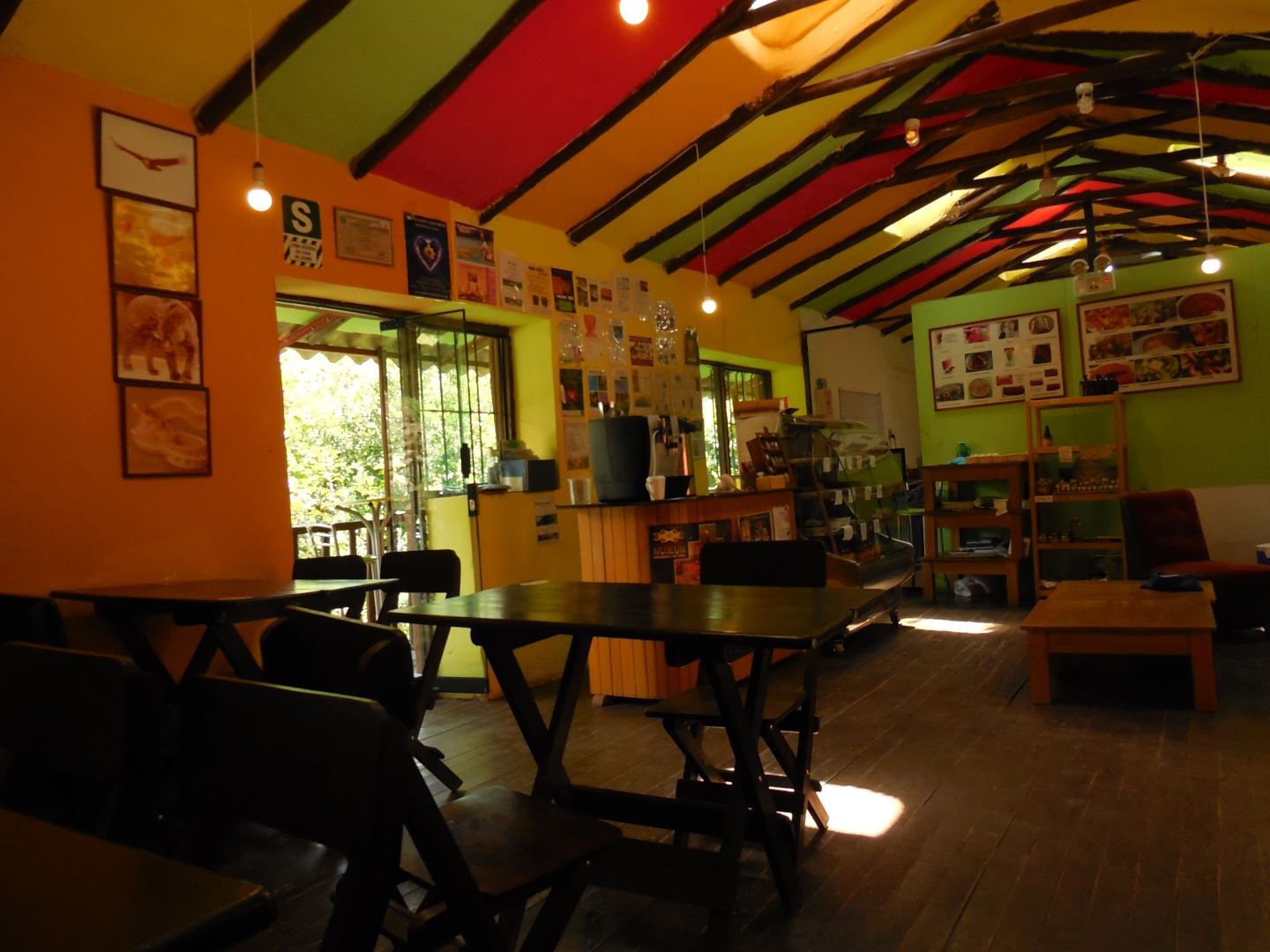
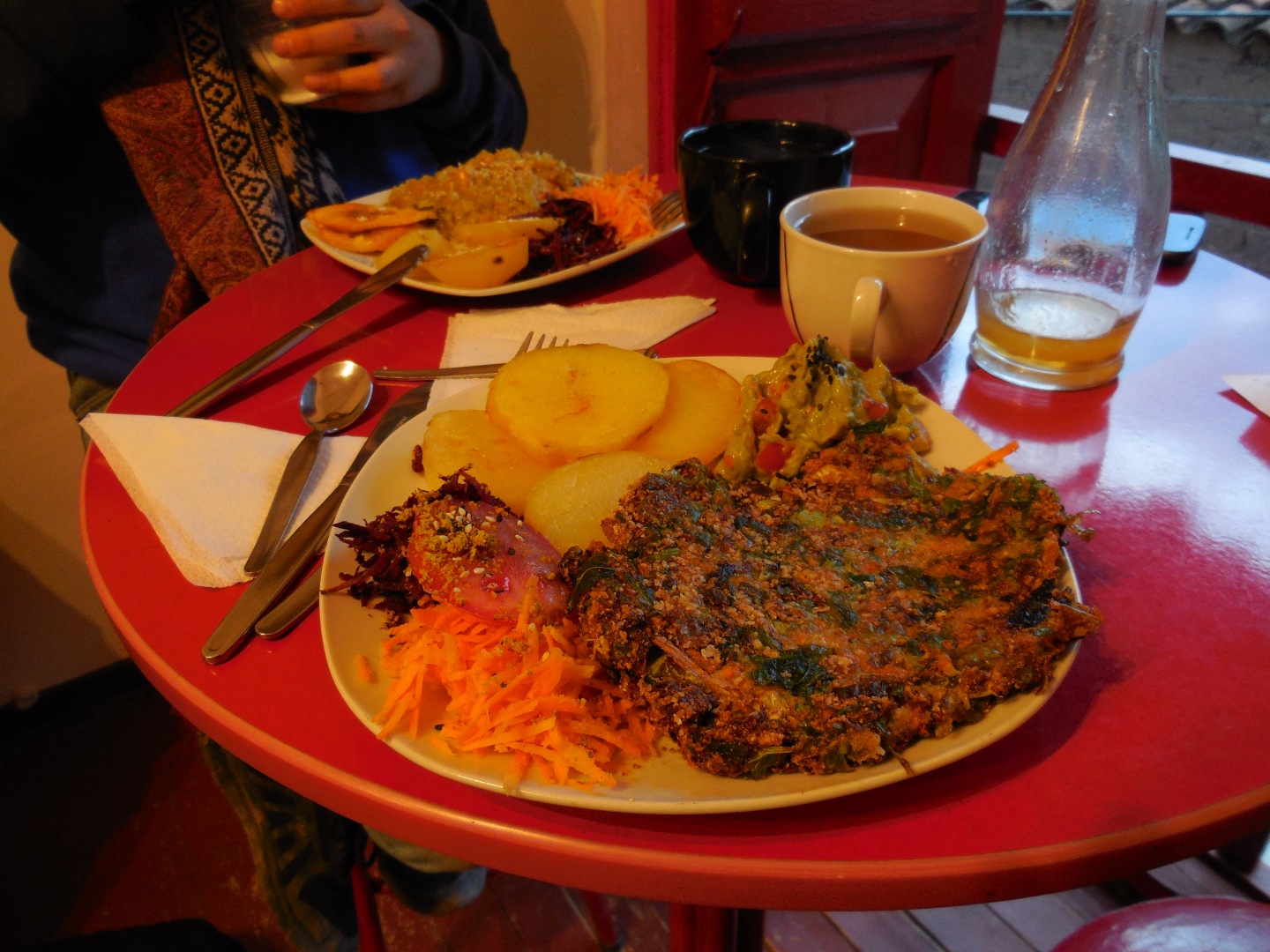
After Pisac, we went back to Cusco and planned a trip to Lake Humantay.
It came in as the far easier of the two day-treks that we did on this trip–neither of us felt the altitude much and the only real hiccup came at the end when our bus broke down and we thought we were stranded (but then the bus started and everything was fine! Kind of a recurring theme with things here…)

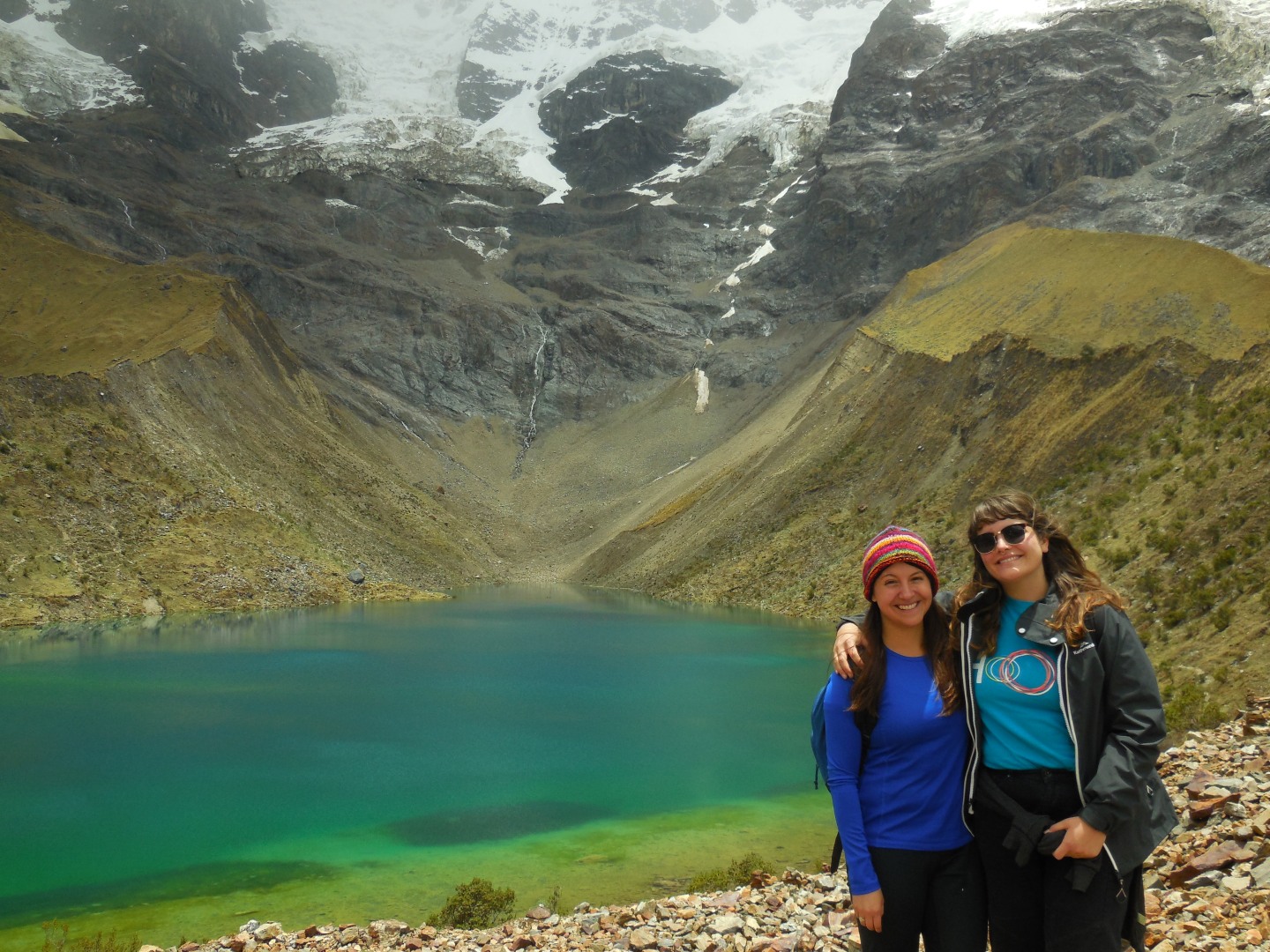
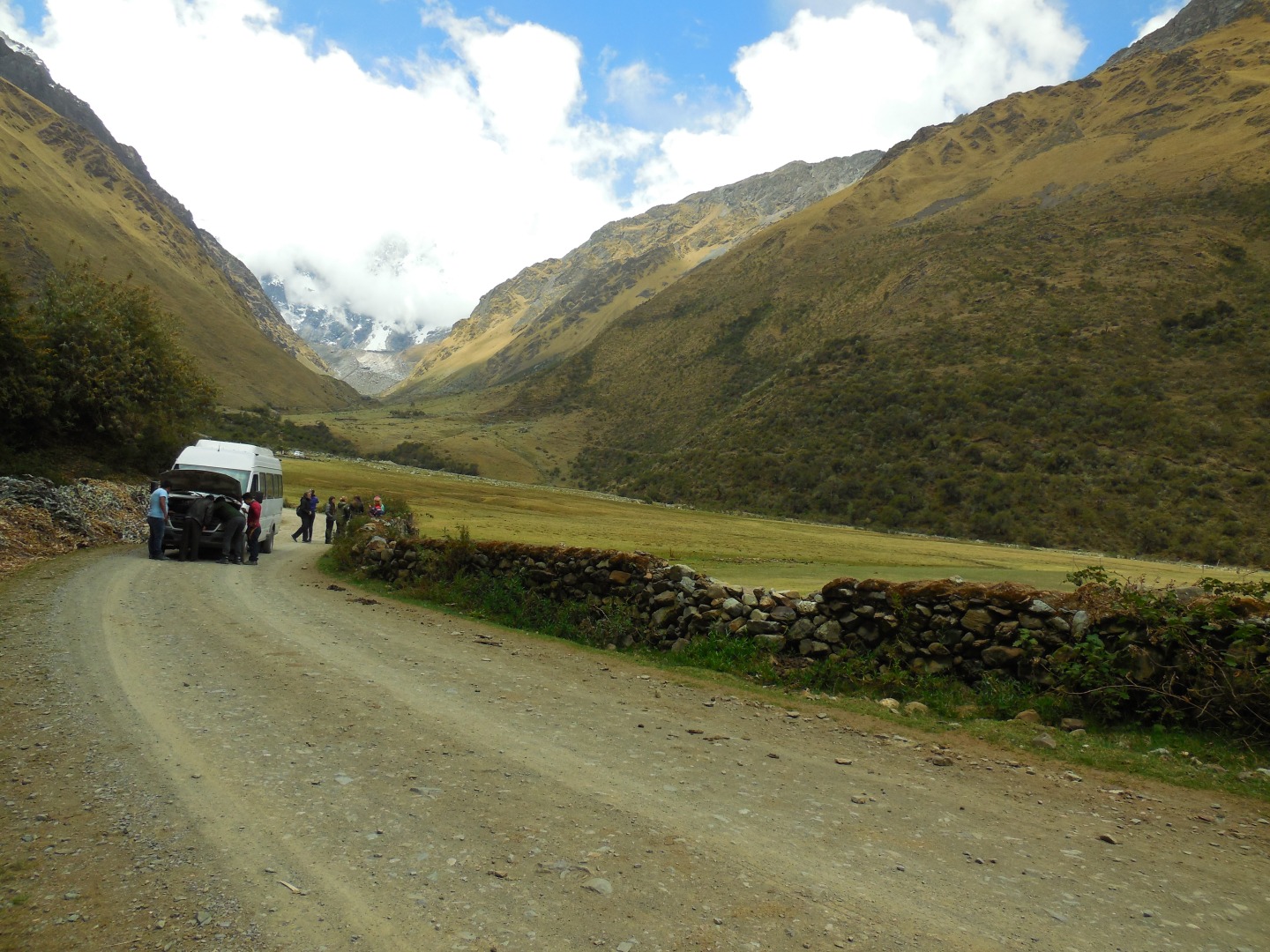
Once we arrived back to Cusco, we said goodbye to the city and caught an overnight bus to Ica. It’s still unclear why, but for some reason this was the worst bus ride we had throughout all of our travels in Peru. Neither of us slept (not unusual for Laura, but normally I can sleep on and through anything). My phone died an hour into the journey and I probably gave myself a little bit of food poisoning eating the cold chicken that came with dinner (don’t judge me, I was hungry).
In any case, when we finally arrived in Ica, sixteen hours later.
We were in no mood to deal with the tourist-hungry taxi drivers that set upon us the minute the bus doors opened.
After another trying fifteen minutes wherein the taxi driver we chose talked our ear off about this or that (I’ll admit I was a little more focused on trying not to be sick in his car than returning conversation) we arrived at our hostel, checked in, and were essentially zombies for the rest of the day, only leaving the room for food.
The next day, we planned a trip out to Huacachina for a day of dune-buggying and sandboarding. This actually came in as a) way cheaper than I was expecting (less than 30 USD for transport to and from Ica and going out on the dunes) and b) one of my favorite parts of the trip. Something that’s funny to note now, after the fact, since we survived: Absolutely nothing about the experience would have passed my home country’s standards of safety but holy shit was it fun.

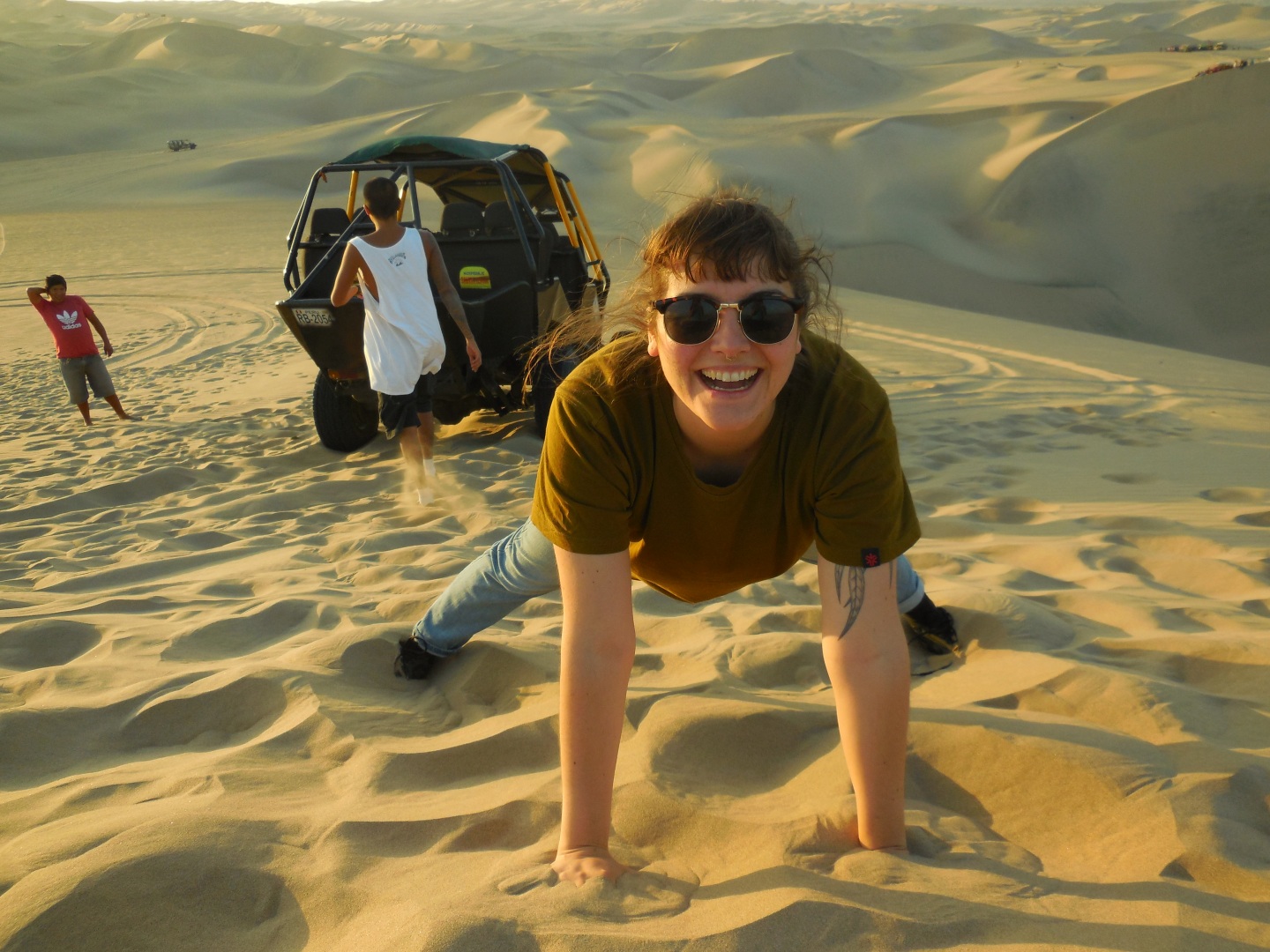
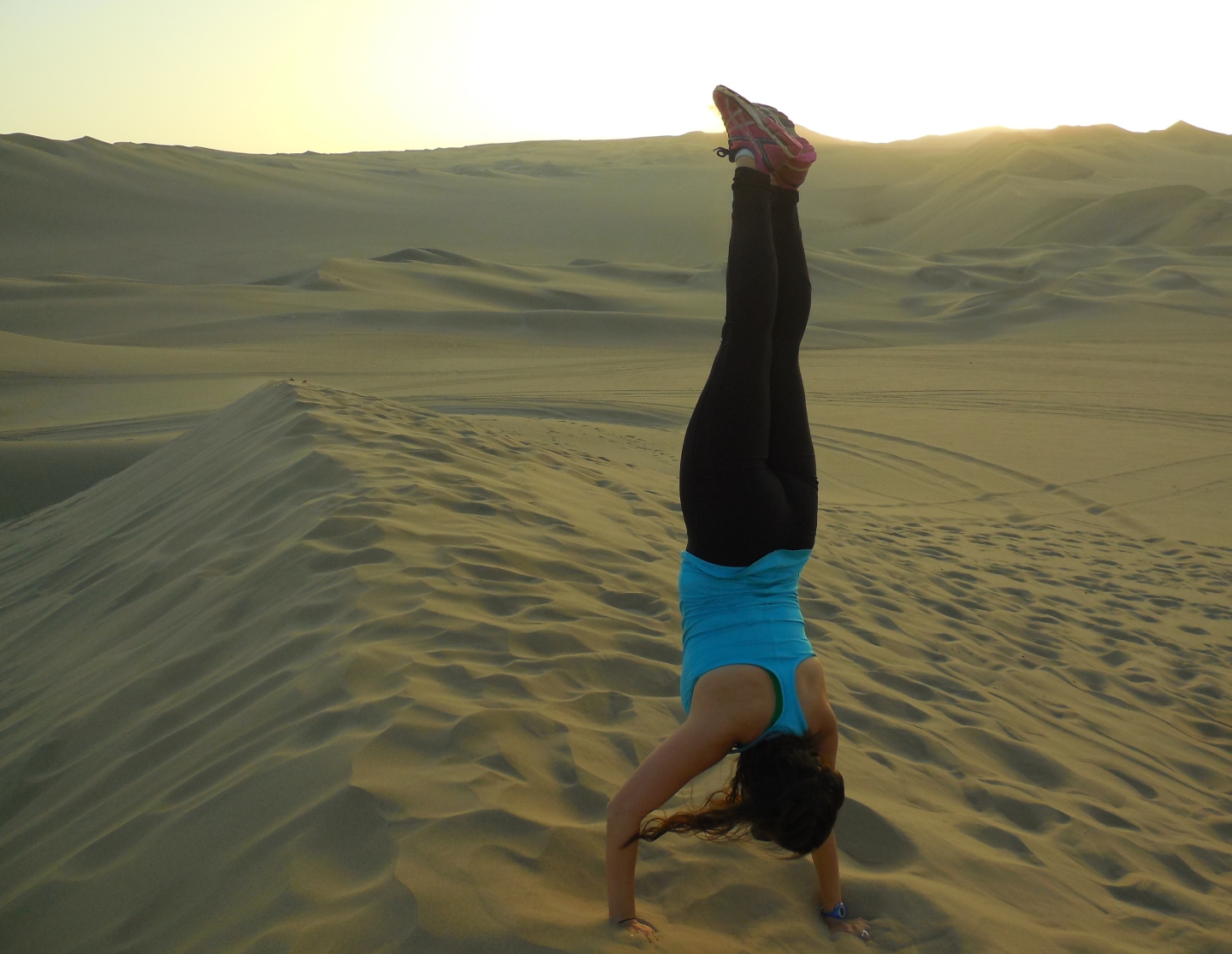

After Ica/Huacachina, it was over to Paracas.
The main event in this little beach town was, for us, a morning excursion out to Islas Bellestas for some bird and sea lion watching.

After Paracas, it was another overnight bus to Huaraz. Isolated but really beautiful, the city felt friendly and familiar thanks to the surrounding mountains; neither of us had realized how much we missed the comforting presence of Arequipa’s volcanoes until we were once again cradled by nature.
The main excursion from Huaraz was a long day-hike to Lago 69.
We knew that this one was going to be more of a challenge, and so it was, full of switchbacks and cruelly steep ascents.
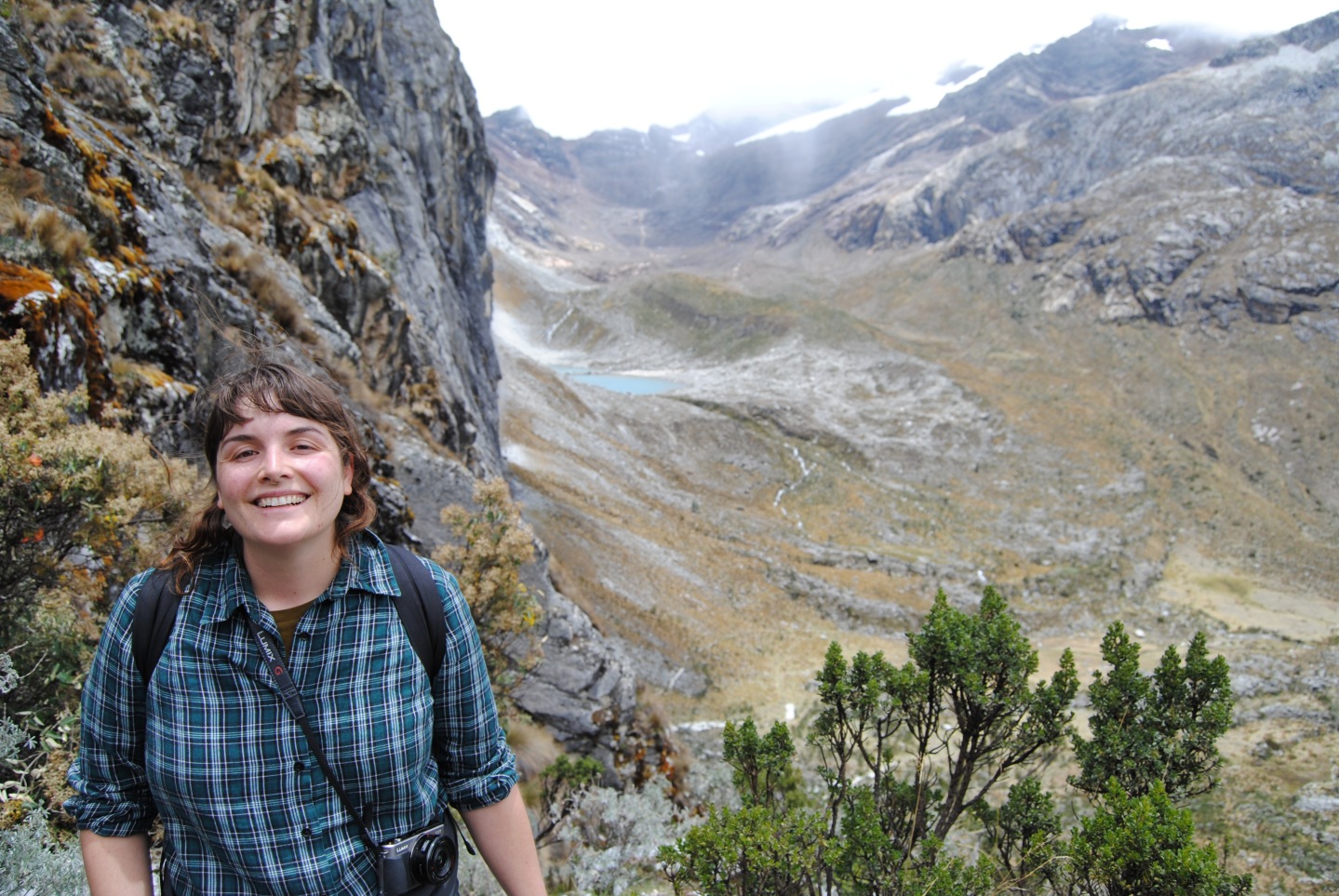
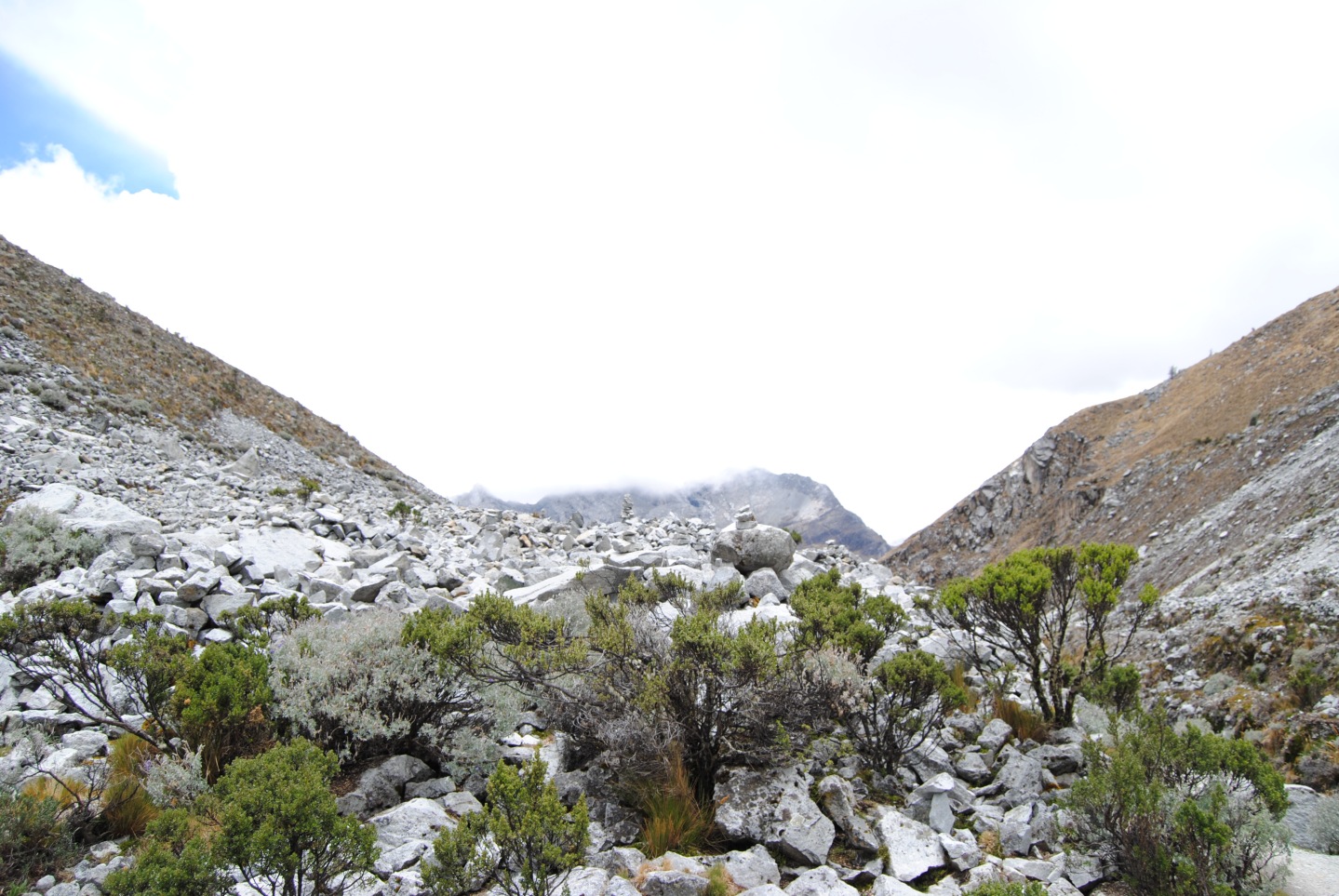
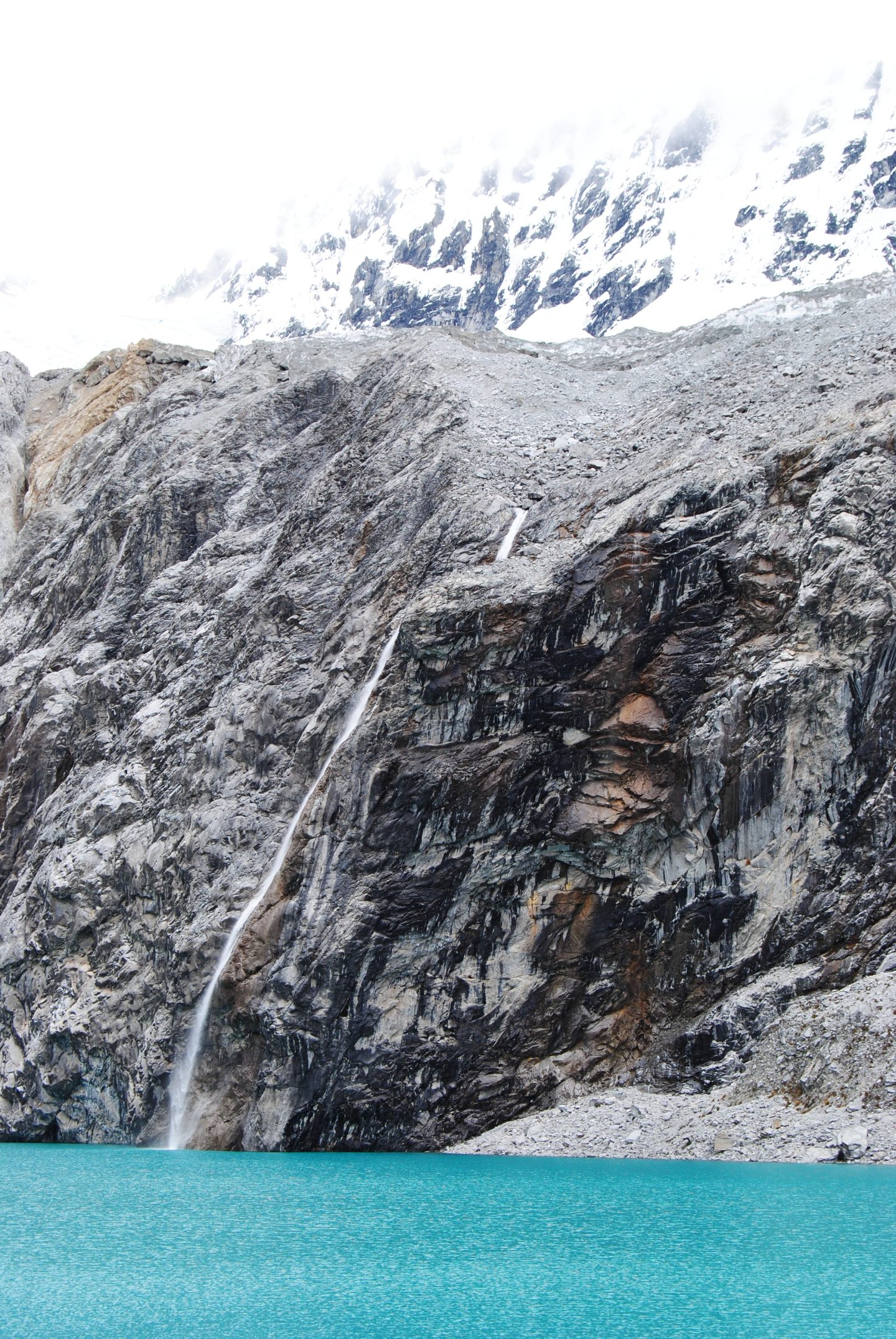
Of important note
Going down is not necessarily easier than going up. Both of us were overeager to get down as it started to rain and descending too rapidly can and did give us wicked headaches and stomachaches. We got dropped off in a haze of satisfied-exhaustion, and plopped down in the quirkiest, vegan-Indian restaurant which was also, fortunately, all you can eat.
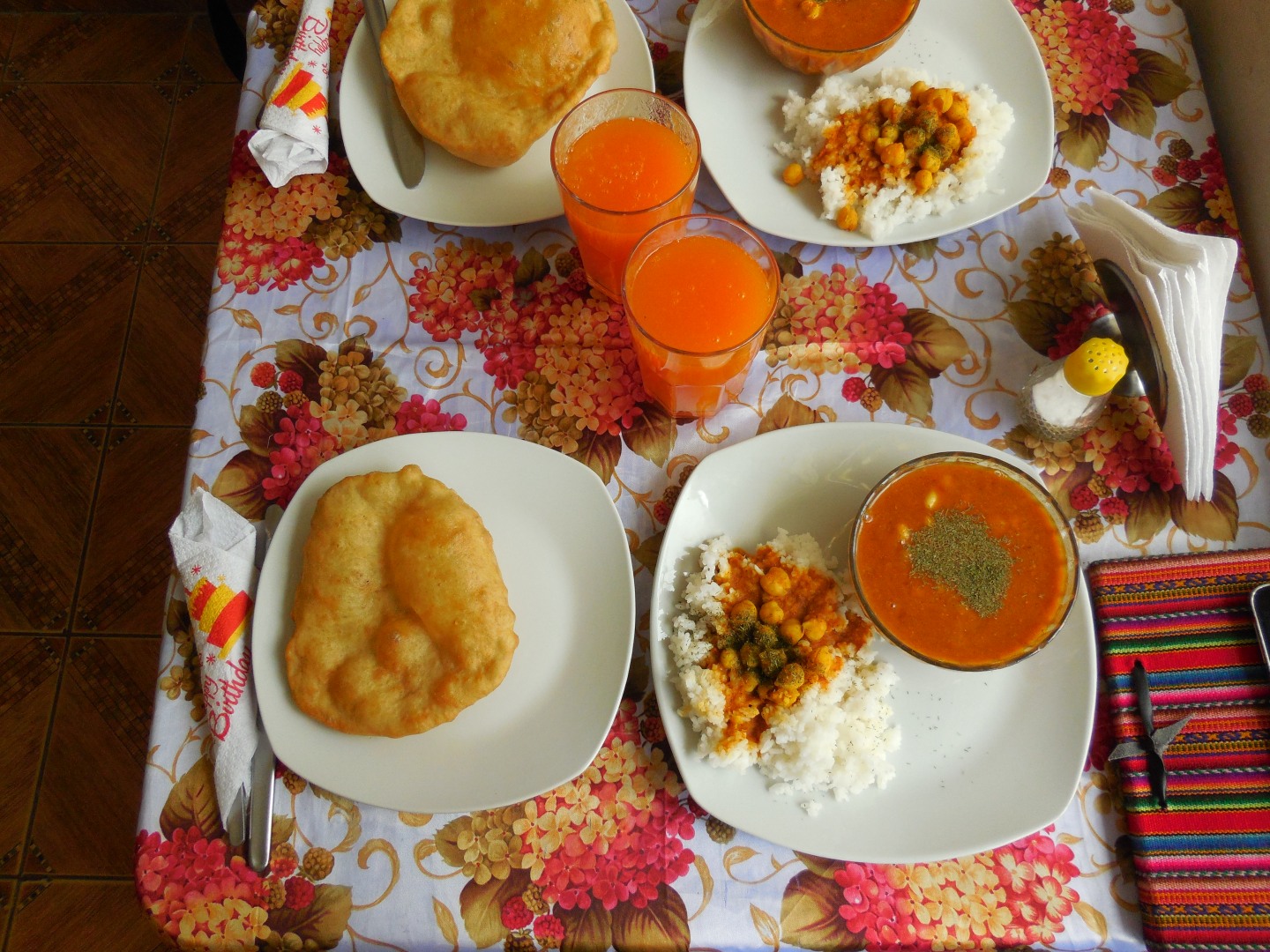
For many reasons, we were reluctant to leave Huaraz, but mainly because it meant we were heading into the last leg of our journey together, and we kind of wanted to move into the nice Indian man’s restaurant. Also, to get to our final destination, we had a series of long bus-hops to make. First stop was an overnight bus to Trujillo where we stayed for a morning, waiting for the next bus, then further up to Piura, where we stayed overnight in the most overbearing but well-meaning woman’s private home-turned-hostel. Finally, one last three-hour bus to Mancora.
Everything sort of blended together, but we had a stroke of luck with a really pleasant bus ride between Trujillo and Piura. We were in pretty good spirits when we finally arrived in Mancora for some long-anticipated beach time.
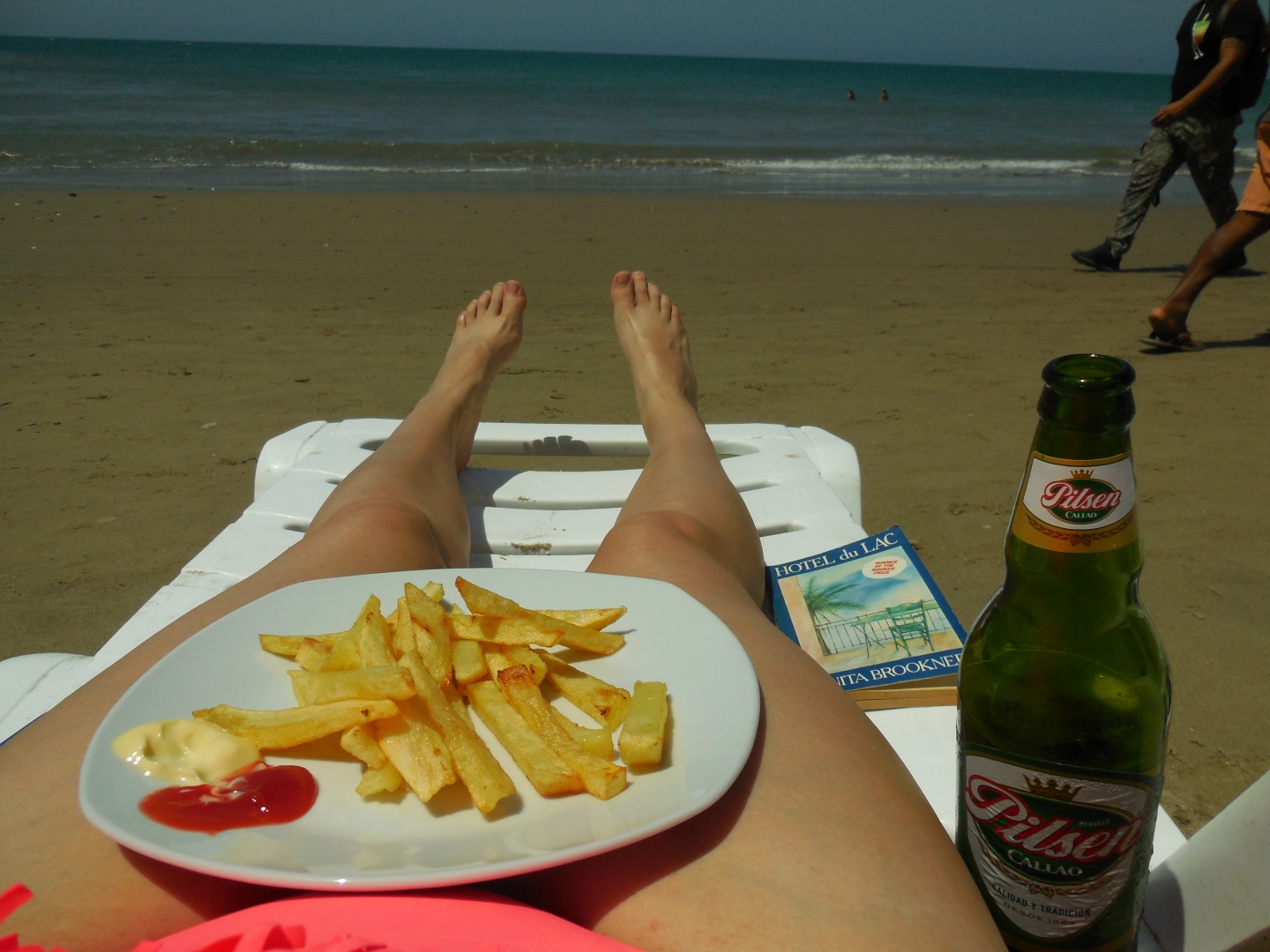
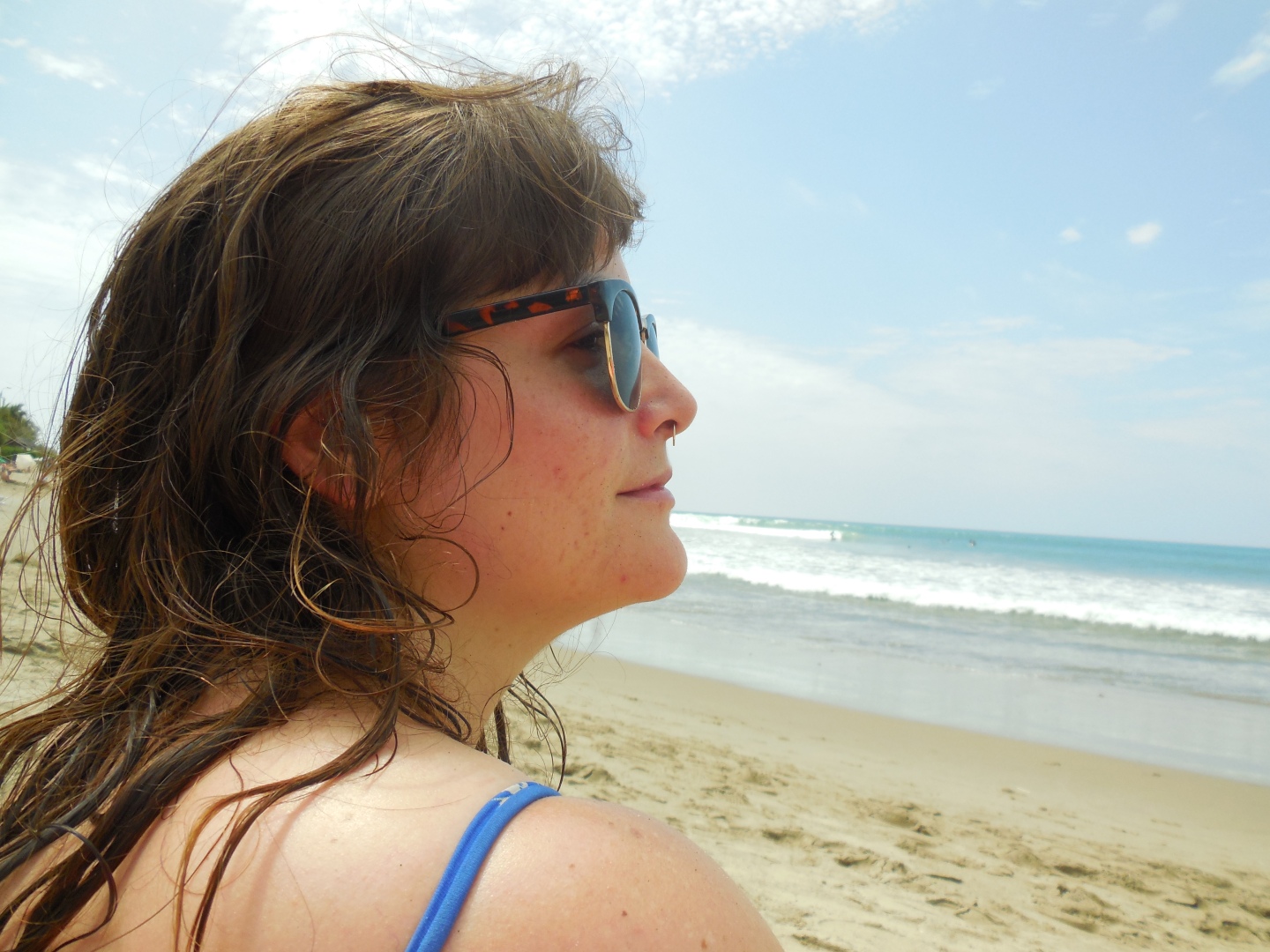
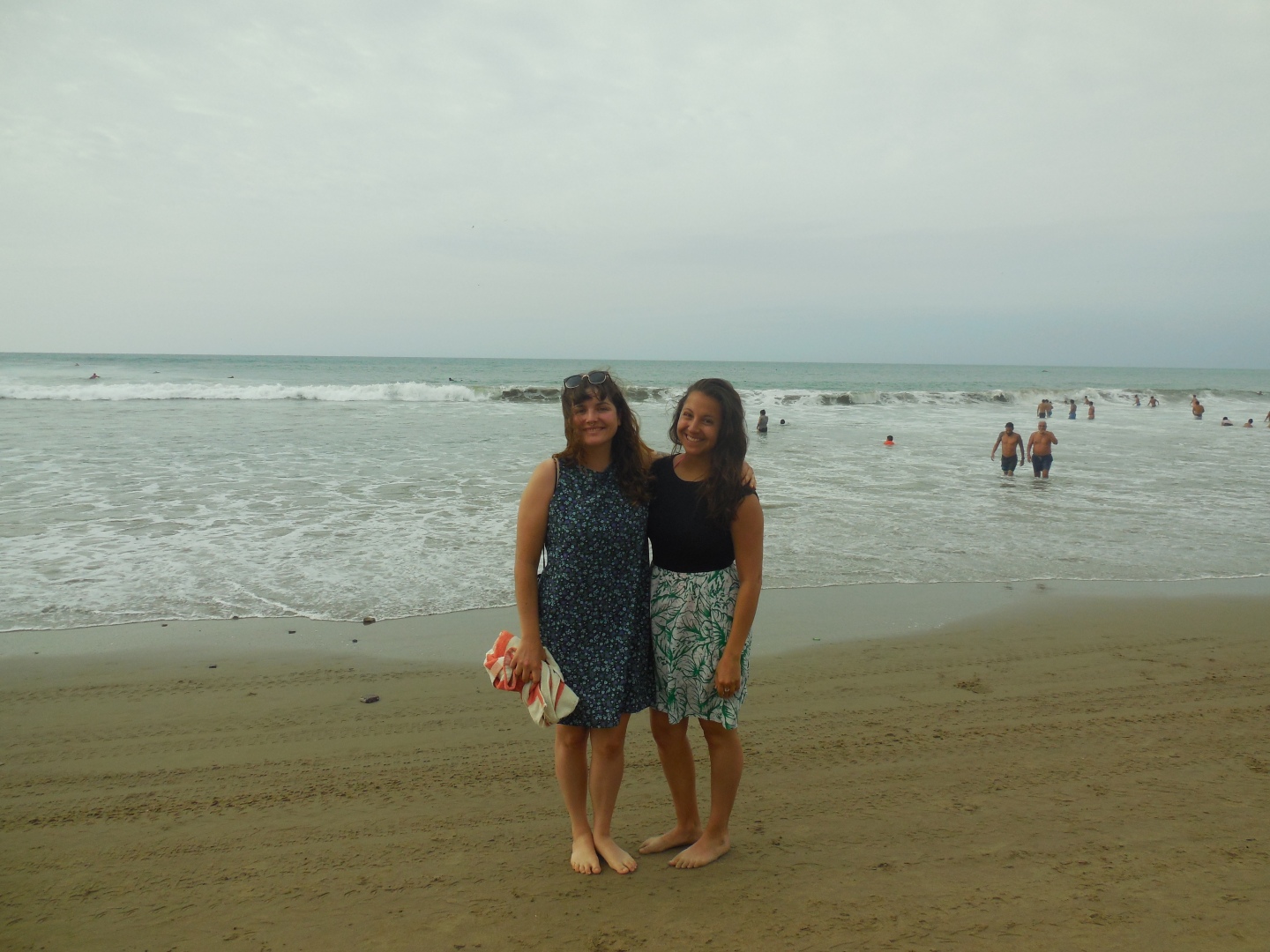
And that’s a wrap!
From here, Laura hangs out on the beach and volunteers at a hostel in exchange for free board and breakfast for three weeks before going back to Australia for their summer. Next year, she’ll travel to Colombia and work for a year as a teaching assistant. For my part, tomorrow, I travel to Buenos Aires and then on the 4th begin a series of travels that end at an estancia in the northern Patagonia, where I’ll live an write the owner’s biography. It’s a little unclear what the Wi-Fi situation will be like down there, but I’ll post an update from Argentina as soon as possible!
If anyone actually read through this garbled mess of a post, good on you. It was a crazy month spent with the best travel partner and full of absurdities and happenstances.
Cheers to the next chapter!

So excited to read about your adventures! And where in Colombia will Laura be?!
Sending some lady love from one part of South America to another <3